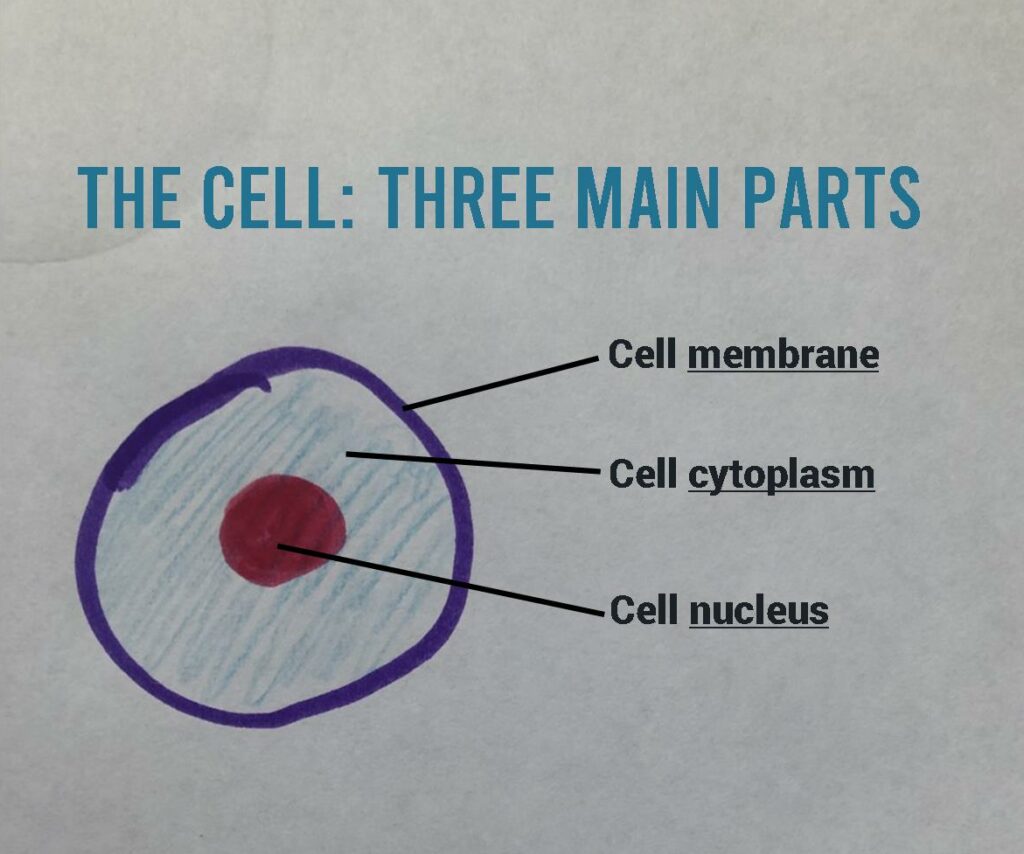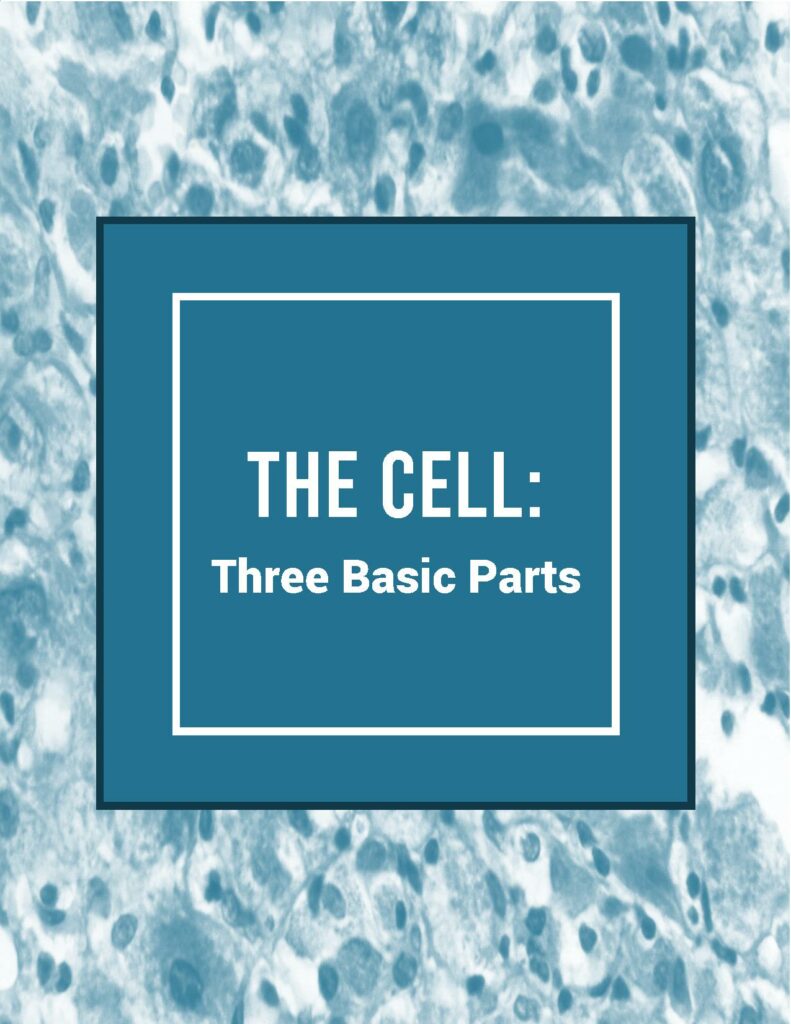
The cell is made of three basic parts: the outer membrane, the cytoplasm, and the nucleus. They are complex, organized, and function much like the human body as a whole. They take in food, produce waste, carry out tasks, and reproduce.
Cells come in many types with many functions. Muscle cells for example, contract to allow us to move, and blood cells carry oxygen from our lungs to the rest of our body. But before we dive further into the 70 billion cells in the human body, we need to understand the basics of the most basic unit of life.
The cell membrane
The cell membrane forms the outer boundary of the cell. This is similar to your skin, as it protects the cell from the outside environment and helps to control the inside environment. Therefore, membranes decide what’s allowed in and out of the cell. For example, water and food must go in, and products and wastes must go out.

The membrane is a “lipid bilayer”. Lipid means fats or oils, and bilayer means two layers. Each layer is a sheet of molecules, lined up in a row. The molecules have two parts: a part that loves water and a part that hates water. The part that loves water is the “head”. The part that hates water is a lipid, and is called the “tail”.
The tails of each layer face each other on the inside of the membrane because there is little water found there. The heads align on the outside of the membrane where there is more water. It’s a simple but powerful layout that is vital to life.
The cell cytoplasm
The cytoplasm fills the inside of the cell. It is a gel-like liquid made of water, salts and molecules. The cytoplasm helps decide what comes in and out of the cell. It holds all the parts of the cell in place, like the cell’s organelles.
Organelles are special parts of the cell. Like the organs in our bodies, they carry out specific tasks to keep the cell alive and functioning. In fact, organelle means “little organs”. Some organelles make energy, some make products, and others remove waste.
One defining feature of an organelle is that it is bound in its own lipid bilayer. Just like the cell’s membrane, molecules pass in and out of these membranes as the organelle performs its duties.
The cell nucleus
The nucleus is the brain of the cell. It is an organelle, with its own lipid bilayer.
The nucleus has two main jobs: cell reproduction, and handling genetic information. Your genetic information decides your physical features, like eye colour and height. The nucleus in each of your cells holds so much genetic information that if we changed it all to text, it would fill millions of pages. Yet it’s packed into a space that is thousands of times smaller than the dot of this i.
The genetic information in the nucleus is like a blueprint for how the cell must do its job. It tells muscle cells to contract, and blood cells to carry oxygen. It instructs the nearly 70 billion cells in our bodies on how to behave and work together as a whole.
References
- Sheldon, H. (1992). Boyd’s introduction to the study of disease (11th ed). Lea & Febiger.
- “Membrane.” Merriam-Webster.com Dictionary, Merriam-Webster, https://www.merriam-webster.com/dictionary/membrane. Accessed 15 Feb. 2021
- “Gene.” Merriam-Webster.com Dictionary, Merriam-Webster, https://www.merriam-webster.com/dictionary/gene. Accessed 8 Nov. 2020.
- Cytoplasm. National Human Genome Research Institute. https://www.genome.gov/genetics-glossary/Cytoplasm. Accessed 15 Feb. 2021
- “Organelle.” Merriam-Webster.com Dictionary, Merriam-Webster. https://www.merriam-webster.com/dictionary/organelle. Accessed 15, Feb. 2021
- “Organelle.” National Human Genome Research Institute. https://www.genome.gov/genetics-glossary/Organelle. Accessed 15 Feb. 2021



